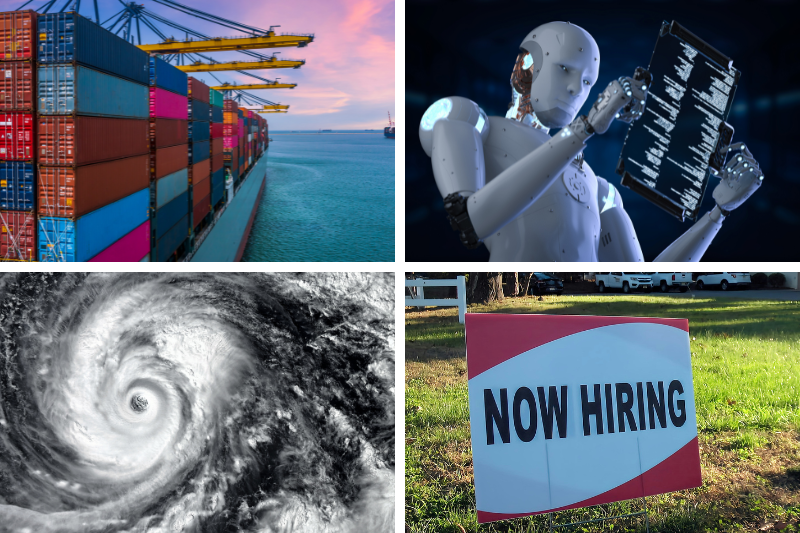A new survey by Aon indicates that nearly three-quarters of business decision makers feel their organizations are not moving quickly enough to address risks associated with global megatrends.
The inaugural Business Decision Maker Survey, which included responses from executives across North America, the UK, and Europe, highlights significant concerns about trade, technology, weather, and workforce trends.
The survey found that 86 percent of respondents believe it is crucial to address the challenges and opportunities presented by these megatrends. However, the complexity and volatility of these issues are making it increasingly difficult to make the right decisions.
“These findings confirm what we’re hearing from our clients every day – the world is more volatile and complex, creating uncertainty and need for new solutions across our global economy,” said Greg Case, CEO of Aon. “Business decision makers recognize the enormity of the challenges presented by the megatrends of Trade, Technology, Weather, and Workforce and they are looking for actionable insights and innovative tools to more quickly address critical risk and people issues.”
What are the megatrends?
The survey identified key areas of concern:
Trade: Business leaders highlighted trade-related risks, including physical and financial threats. Supply chain disruptions and economic concerns, such as exchange rate fluctuations and commodity price risks, are top priorities for the C-suite. Seventy-four percent of respondents noted increased responsibility for supply chain or distribution functions over the past year.
Technology: The rapid advancement of AI and data analytics poses both opportunities and risks. Sixty-three percent of respondents reported measuring the ROI of cybersecurity initiatives, while 61 percent have audited IT suppliers to manage third-party risks and IT sprawl in the last year.
Weather: Extreme weather and climate change are increasingly impacting businesses. Sixty-six percent of decision makers recognize that climate issues raise new risks and vulnerabilities, yet only 59 percent have quantified the financial impact of extreme weather compared to 72 percent who have done so for cyber risks.
Workforce: Rising workforce costs and the need for a compelling employee experience are major challenges. Fifty-seven percent of respondents have materially changed benefit or health care offerings to improve affordability and outcomes. Adjusting talent strategies to account for technological changes and reskilling or upskilling workers for new demands, such as green technology, are top concerns.
Regional differences
Regional differences in risk preparedness were also noted. For instance, 48 percent of U.S. business decision makers view supply chain disruption as a top trade risk, compared to 27 percent in the EU and UK. Conversely, 44 percent of decision makers in the EU and UK see war and political instability as a significant trade risk, compared to 28 percent in the U.S.
The need for better decision-making is underscored by macroeconomic and financial concerns. Seventy-seven percent of respondents are worried about interest rate fluctuations, and 73 percent are concerned about asset price volatility impacting their businesses in the coming year.
“It’s clear that without taking action, business decision makers will not be able to effectively manage their exposures to these megatrends over the next year,” said Eric Andersen, President of Aon. “As the megatrends grow more interconnected, businesses which adopt a comprehensive, data-driven, forward-looking approach to risk management will more confidently address challenges and seize opportunities amid uncertainty.”
Data and analytics are crucial for building confidence among business leaders. The survey found that 60 percent of very confident decision makers have the data and analytics needed to address challenges, compared to 41 percent of less confident leaders. Accurate modeling of climate and weather risks remains a concern, with only 39 percent of decision makers expressing confidence in their data and analytics.
Aon’s Business Decision Maker Survey involved online interviews with 812 business decision makers from April 24 to May 5, 2024. Respondents included C-suite executives and senior executives from companies with over 500 employees in the United States, Canada, United Kingdom, Germany, France, Italy, and Spain.



